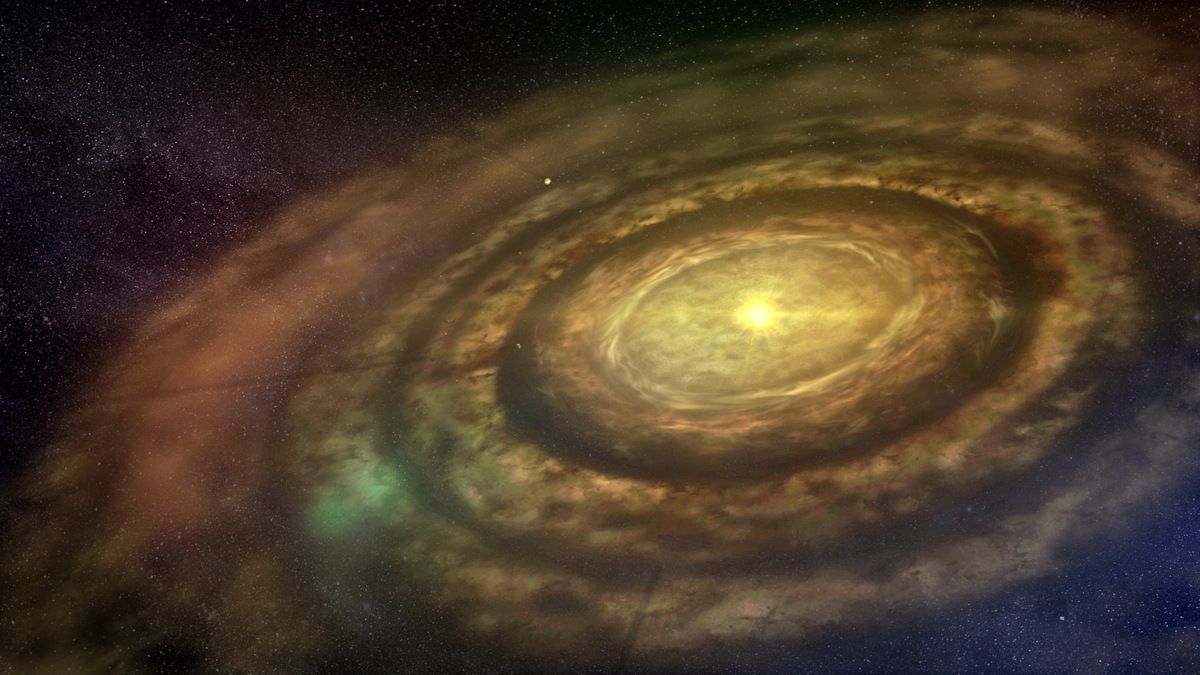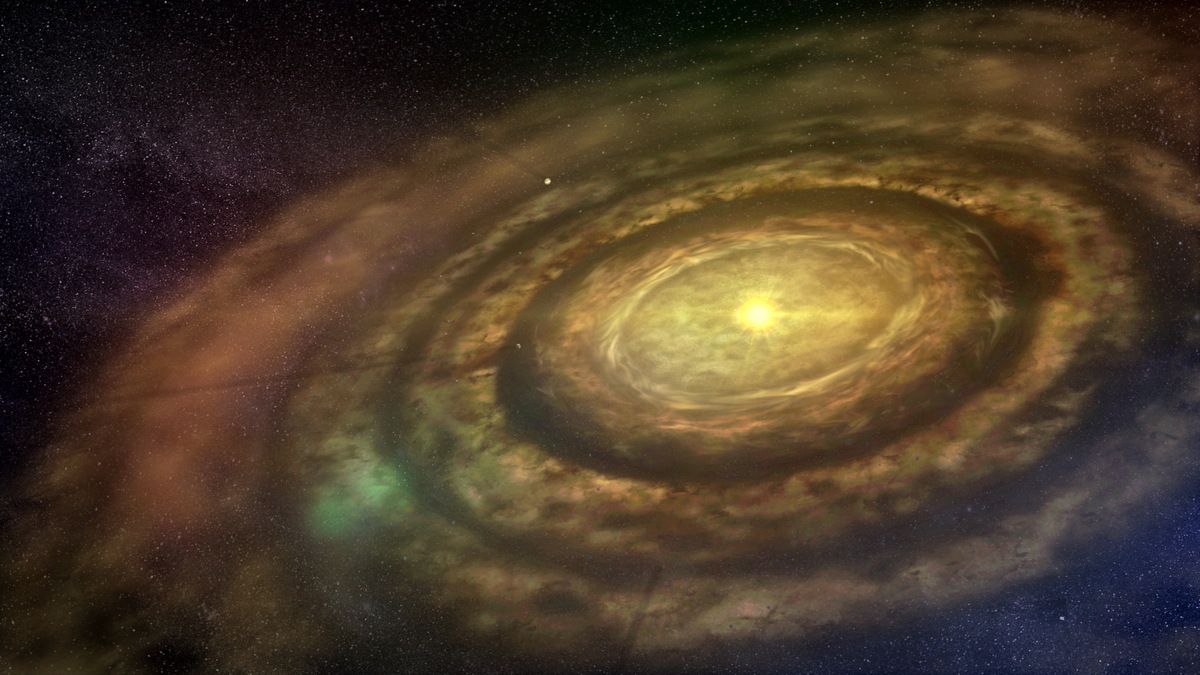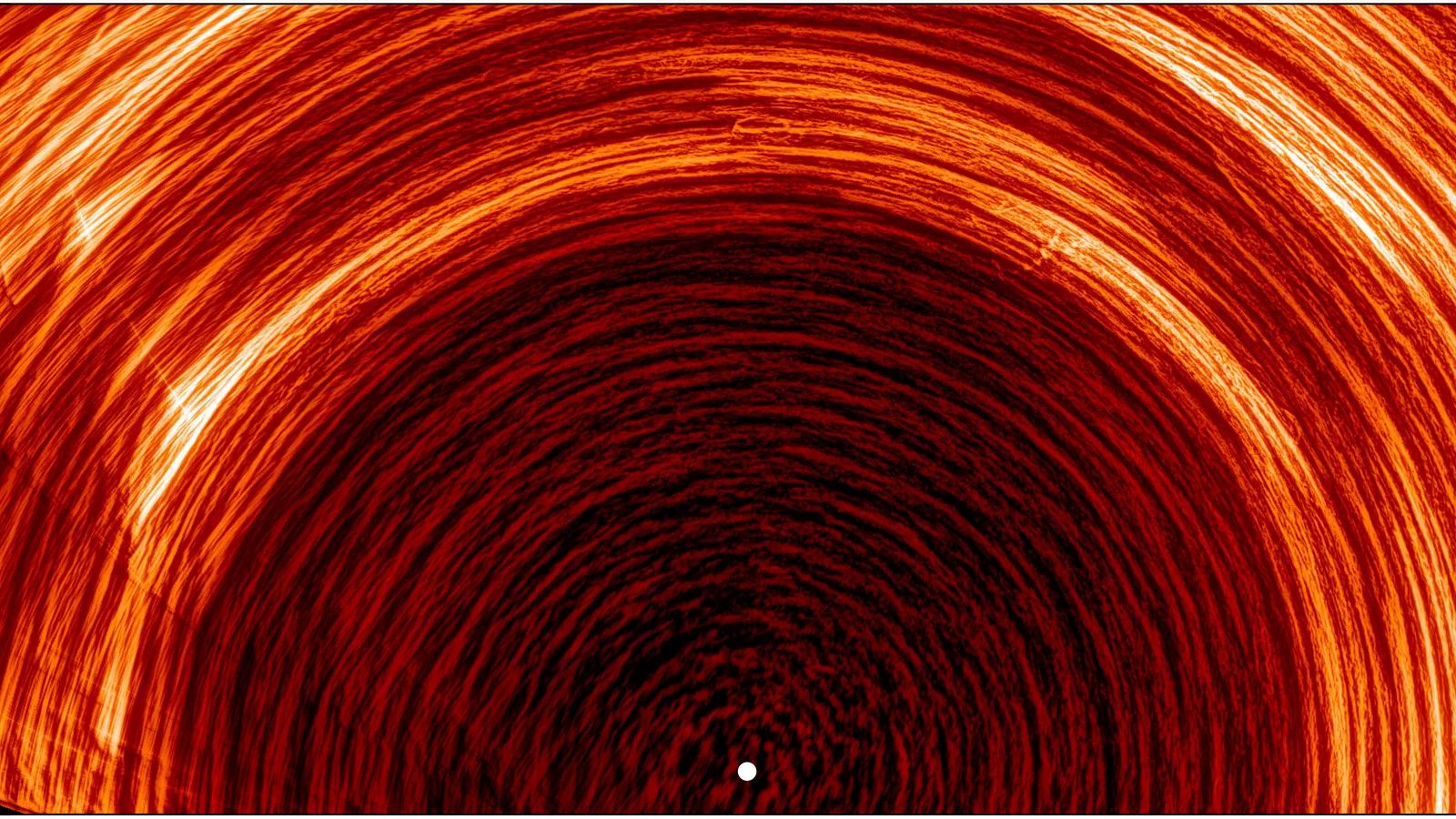Now Reading: Planets may make their own water as they form — could that mean more habitable worlds in the universe?
-
01
Planets may make their own water as they form — could that mean more habitable worlds in the universe?
Planets may make their own water as they form — could that mean more habitable worlds in the universe?


Water isn’t just delivered to planets by comets and asteroids — it can also be forged as worlds form, a new study finds.
For decades, scientists have debated the origin of Earth’s water. One long-standing theory suggests that it was delivered by icy bodies from the outer solar system after Earth formed, while another proposes that the raw materials that make up our planet already held the ingredients necessary to generate water internally. Until now, however, this second hypothesis had never been tested under realistic laboratory conditions.
The new findings, published Oct. 30 in the journal Nature, offer a fresh perspective on one of planetary science’s oldest questions and expand the possibilities for where life-sustaining water might arise in the cosmos.
“This work demonstrates that large quantities of water are created as a natural consequence of planet formation,” Anat Shahar, a scientist at the Carnegie Institution for Science in Washington D.C., who co-led the study, said in a statement. “It represents a major step forward in how we think about the search for distant worlds capable of hosting life.”
Of the more than 6,000 exoplanets discovered so far in our Milky Way galaxy, worlds larger than Earth but smaller than Neptune, known as sub-Neptunes, are the most common. Although no such planet exists in our solar system, scientists suspect these worlds possess rocky interiors enveloped by thick, hydrogen-rich atmospheres. That combination makes them ideal analogues for testing how water might form during the earliest stages of planetary evolution, the study notes.
To explore this process, Shahar and her team built a miniature version of a sub-Neptune in the lab. Using a device called a diamond anvil cell, they compressed samples of molten, iron-rich rock to nearly 600,000 times Earth’s atmospheric pressure between the tips of two diamonds and heated them to more than 7,200 degrees Fahrenheit (4,000 degrees Celsius) — temperatures comparable to those found deep within a molten planet, according to the statement.
Scientists say this setup simulated a crucial phase in planet formation, when newly formed worlds orbiting young stars are shrouded in thick blankets of hydrogen gas. That hydrogen acts like a “thermal blanket,” trapping heat and keeping magma oceans molten for millions — or even billions — of years, during which the gas and molten rock can interact.
Under these hellish conditions, the researchers found that hydrogen dissolves easily into molten rock, where it reacts with iron oxides to produce substantial amounts of water. The results show that water can arise as a natural byproduct of rock-and-gas chemistry, without requiring delivery from comets, asteroids or other external sources.
The findings imply that, rather than a rare cosmic accident, water may be an inevitable outcome of how planets form, making it far more common across the galaxy than scientists once thought.
Stay Informed With the Latest & Most Important News
-
 012024 in Review: Highlights from NASA in Silicon Valley
012024 in Review: Highlights from NASA in Silicon Valley -
 02Panasonic Leica Summilux DG 15mm f/1.7 ASPH review
02Panasonic Leica Summilux DG 15mm f/1.7 ASPH review -
 03How New NASA, India Earth Satellite NISAR Will See Earth
03How New NASA, India Earth Satellite NISAR Will See Earth -
 04And Thus Begins A New Year For Life On Earth
04And Thus Begins A New Year For Life On Earth -
 05Astronomy Activation Ambassadors: A New Era
05Astronomy Activation Ambassadors: A New Era -
06SpaceX launch surge helps set new global launch record in 2024
-
 07From Polymerization-Enabled Folding and Assembly to Chemical Evolution: Key Processes for Emergence of Functional Polymers in the Origin of Life
07From Polymerization-Enabled Folding and Assembly to Chemical Evolution: Key Processes for Emergence of Functional Polymers in the Origin of Life




















